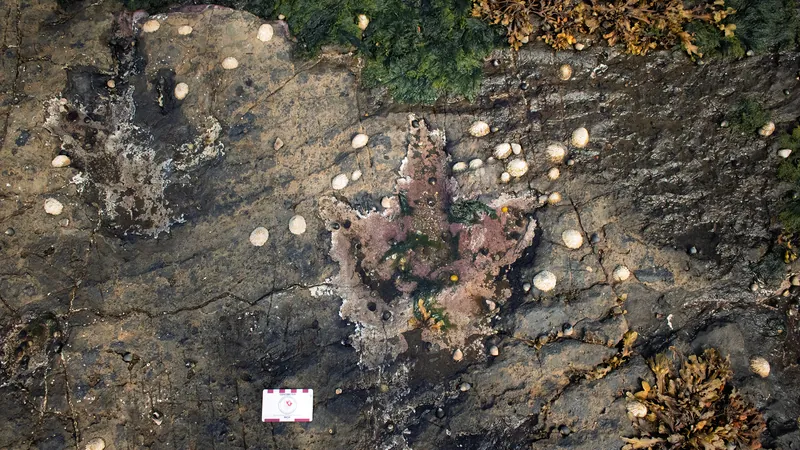
Discoveries of Ancient Dinosaur Footprints on Isle of Skye Unveil Jurassic Wonders
2025-04-15
Author: Daniel
A Glimpse into the Jurassic Era
On the picturesque Isle of Skye in Scotland, a remarkable discovery has unearthed fossilized dinosaur footprints that unveil fascinating secrets of the Jurassic period. Recent research, published on April 2 in the journal PLOS One, showcases a staggering 131 footprints left behind by these ancient creatures, offering a window into their world millions of years ago.
Prince Charles' Point: A Historic Location
The site of these remarkable fossils, designated Prince Charles' Point, carries historical significance—it is named after Bonnie Prince Charlie, who is believed to have landed there following his defeat in the 1746 Battle of Culloden. This blend of history and paleontology enriches the narrative of the area.
Dinosaur Diversity in Footprints
The footprints reveal a vivid landscape populated by at least two species of dinosaurs: a theropod, related to the fierce Tyrannosaurus rex, and a sauropod, akin to the long-necked giant Brontosaurus. Among the 131 footprints recorded, 65 belonged to theropods, 58 to sauropods, while eight remain unidentified. Remarkably, some prints preserved even the distinct impressions of their claws.
Analyzing the Imprints
The theropod footprints exhibit clear three-toed impressions, while the sauropods left behind circular prints. Researchers speculate that these tracks could belong to ancestors of the carnivorous Megalosaurus and the herbivorous Cetiosaurus. The variety in theropod footprints suggests the possibility of multiple species interacting in this ancient habitat.
The Mystery of the Lagoon
These footprints indicate that the dinosaurs engaged in random, milling behaviors as they roamed the lagoon's shores. Interestingly, while other discoveries on the island have revealed tiny footprints suggestive of breeding grounds, none were found here. The reason the dinosaurs frequented this lagoon remains a mystery, with theories suggesting it may have offered food or shelter.
From Fish Burrows to Dinosaur Footprints
In a surprising twist, some sauropod prints which were originally misidentified as fish burrows in the 1980s were confirmed as tracks only after investigators revisited the site in 2019. Lead researcher Tone Blakesley recounts the thrilling moment of discovery, emphasizing that in paleontology, treasures are often found just as you think it’s time to go.
Preserving the Footprints
The conditions needed for such precise preservation were unique. It appears the footprints were made in the sandy shallows of a lagoon, where light currents sculpted ripples that remain visible today in the sandstone. For these delicate prints to endure, they required a rapid burial by sediment, possibly during a storm, which ultimately protected them from erosion.
A Race Against Time
These ancient tracks remain at the mercy of the tidal waves of the intertidal zone, making their documentation vital. Researchers are racing against time to study these footprints before they are washed away, erasing the evidence of the majestic dinosaurs that once roamed this stunning landscape. This remarkable intersection of natural history and paleontological significance continues to captivate and inspire those who explore the rich heritage of the Isle of Skye.



 Brasil (PT)
Brasil (PT)
 Canada (EN)
Canada (EN)
 Chile (ES)
Chile (ES)
 Česko (CS)
Česko (CS)
 대한민국 (KO)
대한민국 (KO)
 España (ES)
España (ES)
 France (FR)
France (FR)
 Hong Kong (EN)
Hong Kong (EN)
 Italia (IT)
Italia (IT)
 日本 (JA)
日本 (JA)
 Magyarország (HU)
Magyarország (HU)
 Norge (NO)
Norge (NO)
 Polska (PL)
Polska (PL)
 Schweiz (DE)
Schweiz (DE)
 Singapore (EN)
Singapore (EN)
 Sverige (SV)
Sverige (SV)
 Suomi (FI)
Suomi (FI)
 Türkiye (TR)
Türkiye (TR)
 الإمارات العربية المتحدة (AR)
الإمارات العربية المتحدة (AR)